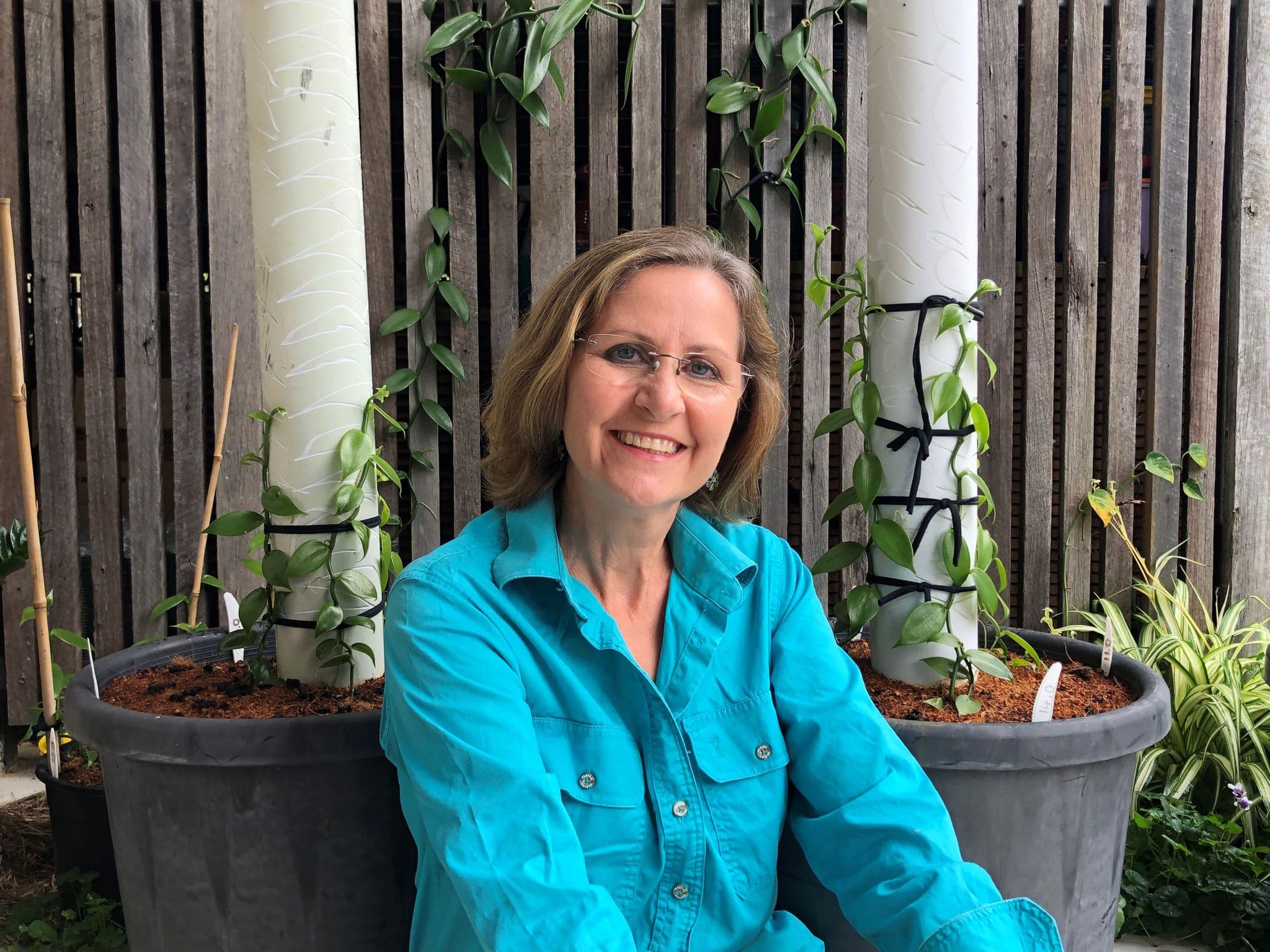With the help of a very supportive Associate Professor and cohort of PhD students – ‘I felt like a square peg in a round hole’, she says – Julie gained the confidence to master tissue culture, and is currently building a small, aseptic laboratory at home where she can produce virus-free, identical clones relatively cheaply from a small piece of the vanilla orchid’s plant material.
She first read about the cultivation of vanilla 10 years earlier and discussed growing it with her husband, but they were living in Rockhampton where the climate was too dry. At the same time, she discovered a nest of native bees in the meter box at her home. A friend transferred the bees to a hive and Julie brought them with her when she moved to the Sunshine Coast, where they produce honey and help pollinate vegetables in her garden.
“The original pollination of vanilla orchids in Mexico in the 1500s was said to be done by bees, so I started thinking about the potential for using solitary native bees like the blue banded bee, which is used on tomato crops, as pollinators in the greenhouse,” said Julie.
“You need a bigger bee that’s capable of manually pushing aside the little flap that’s in the orchid flower to enable it to be fertilised. With my Grant funding, I’m attending the third Australian Native Bee Conference in Sydney in June to find out whether this is feasible.”
The reason that vanilla is second only to saffron as the most expensive spice is due to the labour-intensive nature of growing the crop. It takes three years to reach flowering stage. The plant flowers briefly for a few hours and must be fertilised by hand, since the male and female reproductive organs are separated by a membrane or flap that makes it impossible to self-fertilise.
Once a pod is formed, it’s another nine months before it can be harvested, and it takes another six months of curing and conditioning before the dark and oily vanilla bean is ready for sale, at prices that have recently peaked at $600/kg.
Australia ranks third in the world for per capita vanilla consumption and sixth in the world’s top vanilla importers. Local production is limited to a few commercial farms in Far North Queensland and a recently established geodome growing vanilla in New South Wales.
AgriFutures is currently undertaking a feasibility study for vanilla production in Australia and developing an RD&E strategic plan for the industry, and Julie is sitting in on meetings with the researchers.
As climate change creates challenges for the world’s key vanilla producers in Madagascar and Indonesia, Julie says the idea of creating a microclimate through protected cropping is attracting more interest. For now, she’s enjoying the opportunity to build new networks and expand her professional development as a result of being a recipient of the AgriFutures Rural Women’s Acceleration Grant.
“I’ve completed a tissue culture course and am about to start another on nursery management, and I’ve also engaged a person to mentor and teach me about building my logo and social media presence and web page. I feel I’m making some headway now,” Julie said.
“I’m also passionate about education for mature age people. Where I live there are so many retirees who have time and skills, so if this works, it would be worth encouraging them to have a few greenhouses in their back yards instead of always having to produce on a mass scale.”
While she admits to feeling ‘excited and scared’ about the long process ahead, Julie says it’ll ultimately be worthwhile.
“If we can build the vanilla industry in Australia we’re doing a service for everybody, and it’s worth investigating these different prospects even if it’s just to dismiss them,” she said.
“I’d love to see my own vanilla flower produce a pod, and then the journey starts again on how to process the pods. So I don’t think my learning’s going to finish any time soon!”
Applications for the 2023 AgriFutures Rural Women’s Acceleration Grant will open on Wednesday, 7 September 2022. Find out more at agrifutures.com.au/acceleration-grant.












